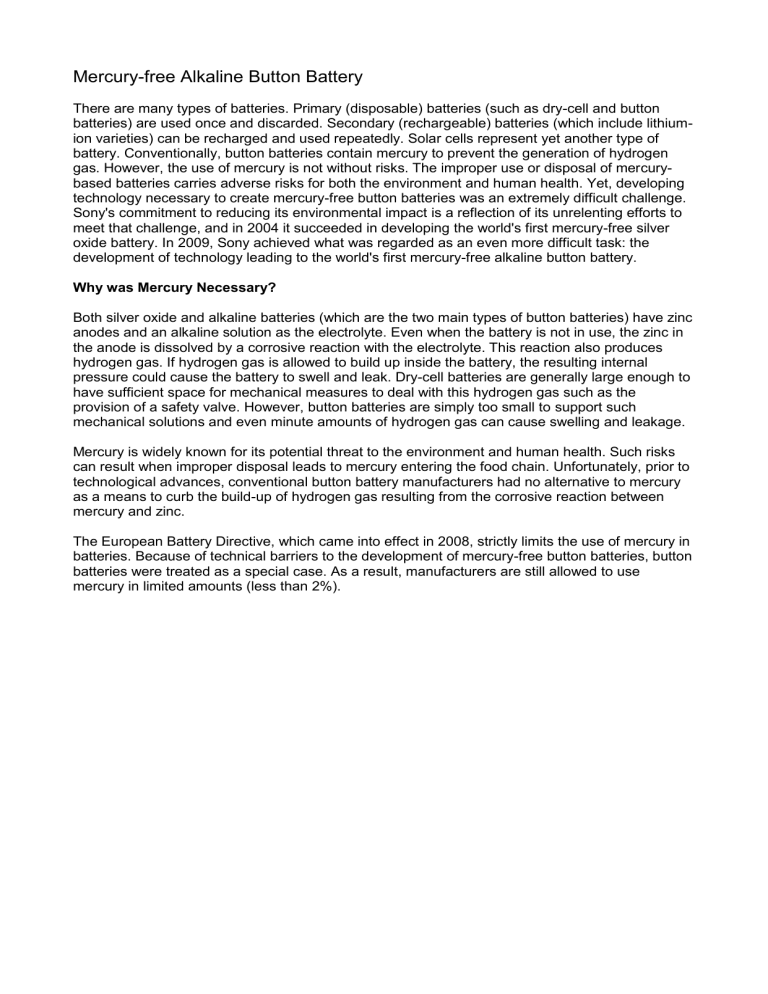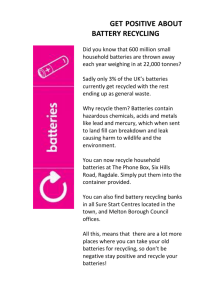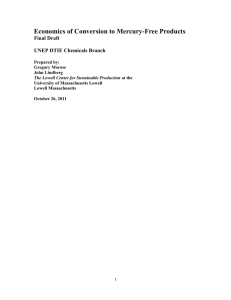Why was Mercury Necessary?

Mercury-free Alkaline Button Battery
There are many types of batteries. Primary (disposable) batteries (such as dry-cell and button batteries) are used once and discarded. Secondary (rechargeable) batteries (which include lithiumion varieties) can be recharged and used repeatedly. Solar cells represent yet another type of battery. Conventionally, button batteries contain mercury to prevent the generation of hydrogen gas. However, the use of mercury is not without risks. The improper use or disposal of mercurybased batteries carries adverse risks for both the environment and human health. Yet, developing technology necessary to create mercury-free button batteries was an extremely difficult challenge.
Sony's commitment to reducing its environmental impact is a reflection of its unrelenting efforts to meet that challenge, and in 2004 it succeeded in developing the world's first mercury-free silver oxide battery. In 2009, Sony achieved what was regarded as an even more difficult task: the development of technology leading to the world's first mercury-free alkaline button battery.
Why was Mercury Necessary?
Both silver oxide and alkaline batteries (which are the two main types of button batteries) have zinc anodes and an alkaline solution as the electrolyte. Even when the battery is not in use, the zinc in the anode is dissolved by a corrosive reaction with the electrolyte. This reaction also produces hydrogen gas. If hydrogen gas is allowed to build up inside the battery, the resulting internal pressure could cause the battery to swell and leak. Dry-cell batteries are generally large enough to have sufficient space for mechanical measures to deal with this hydrogen gas such as the provision of a safety valve. However, button batteries are simply too small to support such mechanical solutions and even minute amounts of hydrogen gas can cause swelling and leakage.
Mercury is widely known for its potential threat to the environment and human health. Such risks can result when improper disposal leads to mercury entering the food chain. Unfortunately, prior to technological advances, conventional button battery manufacturers had no alternative to mercury as a means to curb the build-up of hydrogen gas resulting from the corrosive reaction between mercury and zinc.
The European Battery Directive, which came into effect in 2008, strictly limits the use of mercury in batteries. Because of technical barriers to the development of mercury-free button batteries, button batteries were treated as a special case. As a result, manufacturers are still allowed to use mercury in limited amounts (less than 2%).






